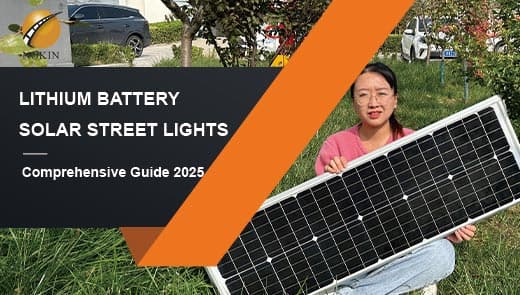Cut Utility Costs with Smart Solar Street Lighting
Under the environment of global energy prices continuing to climb, whether it is urban municipal construction, or corporate campus planning, lighting expenditures in the utility costs have become an increasingly heavy burden. Traditional streetlights rely on grid power, which is not only expensive, but also accompanied by a series of hidden costs such as installation and maintenance. With its unique technical advantages and economic value, smart solar street lights have gradually become an ideal choice for cutting utility costs. In this paper, we will discuss the excellent performance of intelligent solar streetlights in cost reduction, providing a comprehensive reference for decision makers seeking energy saving and consumption reduction.
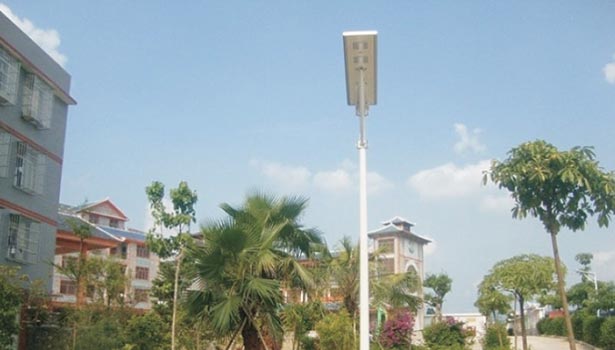
The Hidden Costs of Traditional Street Lighting
Continuously Escalating Electricity Expenses
The cost of electricity for conventional grid-supplied streetlights is a long-term and ever-increasing expense. For example, in a medium-sized city with 10,000 conventional streetlights, the annual cost of electricity for each streetlight is conservatively estimated to be US$150-250, which translates to US$1.5-2.5 million per year for streetlights alone. Moreover, with the volatility of the global energy market, electricity prices often rise without warning. Over the past decade, electricity prices in some areas have risen at an average annual rate of 5% - 8%, putting increasing pressure on cities to spend more on street lighting. For enterprise parks, large parking lots and other places, the traditional street lamps of electricity is also a considerable expense, seriously affecting the operation of the enterprise cost control.
High Maintenance and Repair Costs
Traditional street light systems are highly susceptible to damage by various factors due to long-term exposure to the outdoor environment. Storms, lightning strikes and other natural disasters may lead to a large number of street light poles tilted, lampshade broken, line short-circuit; man-made damage and infrastructure aging is also an important cause of street light failure, some areas have street light lamps and lanterns are stolen, the cable is cut, and so on. According to statistics, the average annual maintenance and repair cost of a traditional streetlight is about $50 - $100, which can add up to a significant amount for cities and businesses with a large number of streetlights.
Hidden Costs of Installation
The installation of traditional streetlights is a complex process with many hidden costs. Installation involves digging trenches and laying cable conduits, which not only takes a lot of time and labor, but also involves land excavation and pavement repair. In order to minimize the impact on traffic during construction in busy urban arteries or commercial areas, it is often necessary to choose night construction, which further increases the construction costs. In addition, there is a risk of damaging neighboring facilities in underground buried line construction. Once the underground pipelines and lines such as water supply, gas, and communication are damaged, the repair cost will be borne by the construction party, and you may also face the problem of compensation due to construction delay.
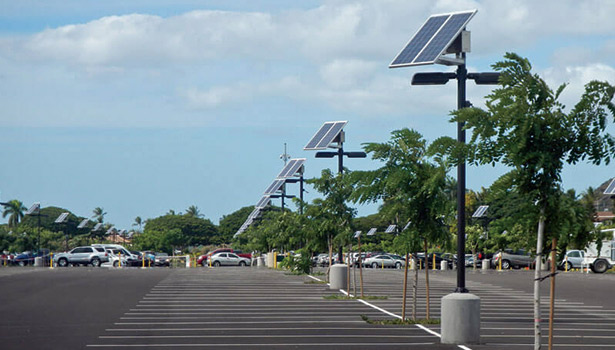
Why Cities Are Switching to Smart solar street lighting
Zero Electricity Expenditure
Smart solar street lights utilize advanced photovoltaic power generation technology to achieve self-sufficiency in electricity. Its working principle is to convert light energy into electricity through solar panels. During the day, the solar panels absorb sunlight, convert light energy into direct current, and store it in high-efficiency lithium batteries; at night, the lithium batteries provide power for the LED lights to realize the lighting function. The whole process does not need to rely on the grid power supply, from installation to use of the whole life cycle, the electricity bill is zero.
Convenient Installation
Unlike the complicated wiring project of traditional street lights, the smart solar street light adopts modular design, which does not require digging trenches and wiring, and can be directly installed on existing poles or bases, greatly simplifying the installation process. The convenient installation of intelligent solar street lights can also effectively reduce traffic delays and economic losses caused by construction. In urban roads, business districts and other personnel and vehicle-intensive areas, traditional street light construction often requires the closure of part of the road, which has a serious impact on the traffic, resulting in reduced traffic efficiency and increasing the time cost of enterprises and residents.
While the smart solar street light installation process, the impact on the surrounding environment is minimal, and the installation can be completed quickly, as soon as possible to restore normal traffic order and commercial activities. From the cost point of view, smart solar street light completely eliminates the cost of digging trenches and wiring, etc., and only need to pay for the purchase of light poles, lamps, batteries and other equipment and installation labor costs, the overall initial investment is significantly reduced.
Low Maintenance Requirements
Smart solar street light is designed with full consideration of the complexity and durability of the outdoor environment, and adopts a series of advanced technologies and materials, which makes it have extremely low maintenance requirements. The solar panels are made of high-efficiency monocrystalline or polycrystalline silicon, featuring high conversion efficiency, UV resistance, wind and sand resistance, etc. Under normal circumstances, the service life can reach more than 25 years, during which basically no maintenance is required.
LED lamps also have a long life, the average life of up to 50,000 - 100,000 hours, according to the calculation of 10 hours of lighting per day, can be used for 13 - 27 years, compared with the traditional street lamps of high-pressure sodium lamps, the frequency of replacement is greatly reduced. Moreover, LED lamps also have the advantages of energy saving and good color rendering, which can provide better lighting effect.
The battery of the smart solar street light adopts high-performance lithium battery with intelligent management system, which can monitor the charging and discharging status, voltage, temperature and other parameters of the battery in real time, and adjust the charging and discharging strategy automatically to prolong the service life of the battery effectively. Under normal circumstances, the service life of lithium battery can reach 5 - 8 years, in the use cycle, without frequent replacement of batteries.
In addition, the smart solar street light also has a remote monitoring function, the management personnel can through the cell phone APP or computer platform, real-time view of the working status of each street light, such as the discovery of faults, can be arranged in a timely manner to deal with the maintenance personnel, greatly improving the maintenance efficiency and reducing the cost of manpower inspection.
Government Incentive Policies
In order to promote the development of renewable energy and reduce the dependence on traditional fossil energy, governments around the world have introduced a series of incentive policies for solar energy applications. In China, the government provides financial subsidies, tax incentives and other support for solar street light projects. The U.S. federal government provides investment tax credit (ITC) policy for solar energy projects, and enterprises or individuals installing solar energy equipment can obtain a certain percentage of tax credits; some countries in Africa, Southeast Asia and other regions, in order to improve the local lighting conditions, actively promote solar street lights, and provide high subsidies and preferential loans for solar street light projects. The implementation of these government incentives has greatly reduced the investment threshold of intelligent solar street light projects and accelerated the return on investment cycle, making more cities and enterprises motivated to choose this green lighting program.
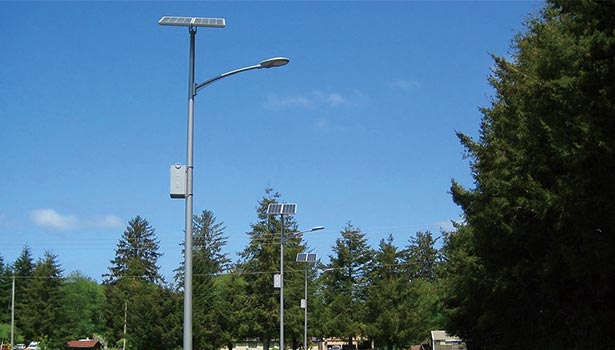
Detailed Analysis of Smart Solar Street Light Cost Components
Solar Street Light Pole
The material, height, and craftsmanship of the street light pole affect its price. Common street light pole materials are hot-dip galvanized steel, aluminum alloy and so on. Hot-dip galvanized steel street light pole has the advantages of high strength, corrosion resistance, etc., the price is relatively high; aluminum alloy street light pole is light weight, beautiful, but the cost is also higher.
Solar Panels
The conversion efficiency, power, and brand of solar panels are the main factors that determine the price. Currently on the market mainstream monocrystalline silicon solar panels with high conversion efficiency, the price is relatively expensive; polycrystalline silicon solar panels are slightly lower in price.
Battery
The type and capacity of the battery have a greater impact on the cost. Smart solar street lights commonly used batteries are lead-acid batteries, lithium batteries and so on. The price of lead-acid battery is lower, but the life is shorter and the maintenance cost is higher; although the price of lithium battery is higher, it has the advantages of small volume, light weight, long life and low self-discharge rate.
Intelligent Control Technology
Intelligent control system includes controllers, sensors and other components, with light control, time control, remote monitoring and other functions. The richer the function, the more advanced technology control system, the higher the price.
LED lighting
LED lighting power, brand, quality and other factors determine its price. Generally speaking, the higher the power, the higher the price.
In addition, transportation costs, installation labor costs, etc. will also have a certain impact on the total cost of intelligent solar street lights.
Are Smart Solar Street Lights Expensive?
The market price of smart solar street light is affected by a variety of factors, and there are significant differences:
Regional Factors
Labor costs and material prices are different in different regions, resulting in differences in product prices. In economically developed regions, the labor cost is higher and the product price is relatively expensive; while in some economically less developed regions, the labor cost is lower and the product price is more competitive.
Supplier Factors
Different suppliers of brand awareness, production processes, after-sales service and other aspects of the differences, which will also be reflected in the product price. Suppliers of well-known brands, due to their product quality is guaranteed, after-sales service is perfect, the price is relatively high; while some small brands or new suppliers to enter the market, in order to seize the market share, may be at a lower price to sell products, but product quality and after-sales service may be at some risk.
Customization Demand
If customers have special customization demand for intelligent solar street light, such as special appearance design, adding specific functions, etc., it will lead to cost increase and product price will be increased accordingly.
Comparison of Investment: Traditional vs. Solar Street Lighting
In order to have a more intuitive understanding of the cost advantages of intelligent solar powered street lights, we make a detailed comparison of the costs of traditional street lights and intelligent solar street lights:
|
Cost Items |
Traditional Street Lights |
Intelligent Solar Street Lights |
|
Initial Investment |
Equipment purchase cost is relatively low, but the total investment is high, due to trenching, wiring, pipeline laying, and power connection. |
Equipment purchase cost is relatively high, but there are no costs for trenching or wiring. Total investment is moderate. |
|
Installation Costs |
High, due to trenching and wiring, accounting for about 30% - 40% of the total investment. |
Easy installation with only minor labor costs; installation costs are low. |
|
Operational Costs |
High electricity cost ($150 - $250 per lamp per year) and high maintenance cost ($100 - $200 per lamp per year). |
Zero electricity cost; low maintenance cost ($10 - $20 per lamp per year). |
|
Long-term Total Cost |
Over time, the accumulating electricity and maintenance costs make the long-term total cost high. |
Despite higher initial investment, zero electricity bills and low maintenance costs lead to much lower long-term costs. |
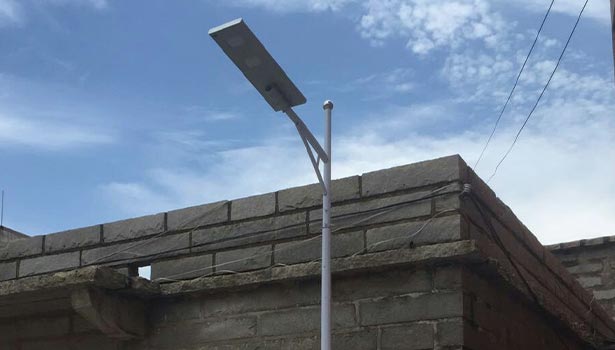
Investment Returns Analysis
Calculating the return on investment (ROI) for a smart solar streetlight project can be done in the following steps:
Step 1: Calculate the Annual Cost Savings:
Annual cost savings = annual savings in electricity costs + annual reduction in maintenance costs. For example, if a project installs 1,000 intelligent solar streetlights, each light saves $16.42 per year in electricity costs, and the annual savings in electricity costs is $16,420; the annual maintenance cost of each light is reduced from $80 to $15 for traditional streetlights, and the annual reduction in maintenance costs is (80 - 15) x 1,000 = $65,000. The annual cost savings of the project is 16,420 + 65,000 = 81,420 USD.
Step 2: Calculate the Return on Investment:
Return on investment (ROI) = (annual cost savings × useful life - initial investment) ÷ initial investment × 100%. Assuming an initial investment of $200,000 and a 10-year lifespan, ROI = (81,420 x 10 - 200,000) ÷ 200,000 x 100% = 307.1%. This means that over a 10-year life cycle, the project will return more than three times the initial investment.
Step 3: Consider Government Incentives:
If the project receives government subsidies or tax incentives, deduct this amount from the initial investment and calculate the ROI. e.g., if the project receives $50,000 in government subsidies, the adjusted initial investment will be $150,000, and the new ROI will be (81,420 x 10 - 150,000) ÷ 150,000 x 100% = 442.8%, which is an even better return on investment. The return on investment is even more impressive. Through the above calculations, city managers and business decision makers can clearly assess the economic feasibility of the smart solar street light project and provide a strong basis for investment decisions.
Future Prospect of Smart Solar Street Light
Application Scene Expansion Trend
The application scene of smart solar street light will continue to expand. In addition to conventional scenes such as city roads, industrial parks, villages, etc., in tourist attractions, customized intelligent solar street lights can be designed in combination with the cultural characteristics of the scenic area, which not only provide lighting functions, but also become the landscape elements of the scenic area.
Smart solar streetlights will also play an important role in infrastructure construction in remote areas. Such as border posts, field research stations, etc., these places are far away from the power grid, the traditional power supply is difficult, the self-sufficient characteristics of intelligent solar LED street lights make it an ideal lighting choice. In addition, in some temporary activities, such as large-scale outdoor exhibitions, music festivals, etc., intelligent solar street lamps can be quickly installed to solve the temporary lighting problem, and can be conveniently disassembled and transferred after the event, realizing the reuse of resources.
Challenges and Coping Strategies
Although smart solar streetlights have a broad prospect, they also face some challenges in the promotion process.
The first is the problem of public awareness and acceptance. Some people have misunderstandings about solar streetlights, believing that they cannot work properly in cloudy and rainy days, winter and other situations with insufficient light, and worrying about unstable lighting effects. In addition, since the initial investment cost of solar powered street lights is relatively high compared to traditional streetlights, some decision-makers are skeptical about their long-term economic benefits and prefer to choose inexpensive traditional streetlights. Therefore, it is an important task in the promotion process to strengthen the popularization of science and demonstrate the reliability and economy of intelligent solar street lights through actual cases, so as to improve the cognition and acceptance of the public and decision-makers.
Secondly, market standardization and uneven product quality are also problems that need to be solved. The current intelligent solar street light market is developing rapidly, but some small manufacturers to reduce costs, the use of poor quality materials and accessories, resulting in product quality is not up to standard, the use of short life. These low-quality products not only harm the interests of consumers, but also affect the reputation of the entire industry. In this regard, the relevant government departments should improve the market regulatory mechanism, develop strict product quality standards, strengthen the qualification audit of manufacturers and product quality sampling. Industry associations should also play an active role in guiding enterprises to standardize production and promote the healthy development of the industry.
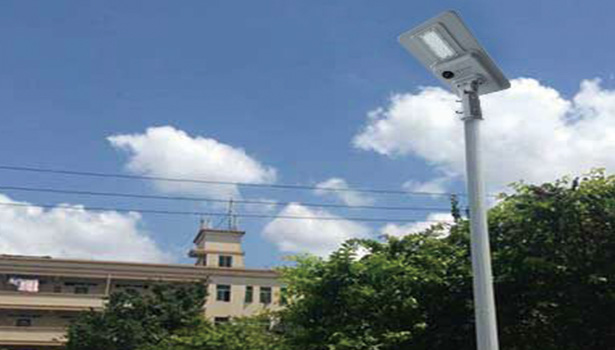
Conclusion
In the context of the global pursuit of sustainable development, smart solar street lights have become an effective solution to cut utility costs by virtue of their significant advantages such as zero electricity expenditure, convenient installation, low maintenance requirements and government policy support. Although smart solar street lights are currently facing many challenges in the promotion process, their application scenarios will continue to expand and their technical performance will be even better as technology continues to innovate and advance. Intelligent solar streetlights will certainly occupy a more important position in the global lighting field, play an important role in realizing energy saving, environmental protection and sustainable development goals, and become the mainstream choice for future urban and rural lighting.

